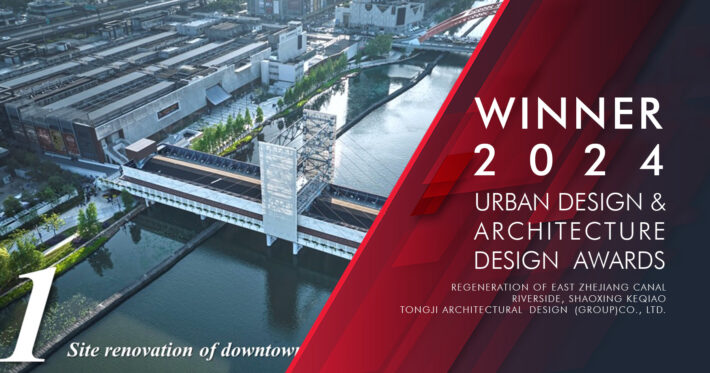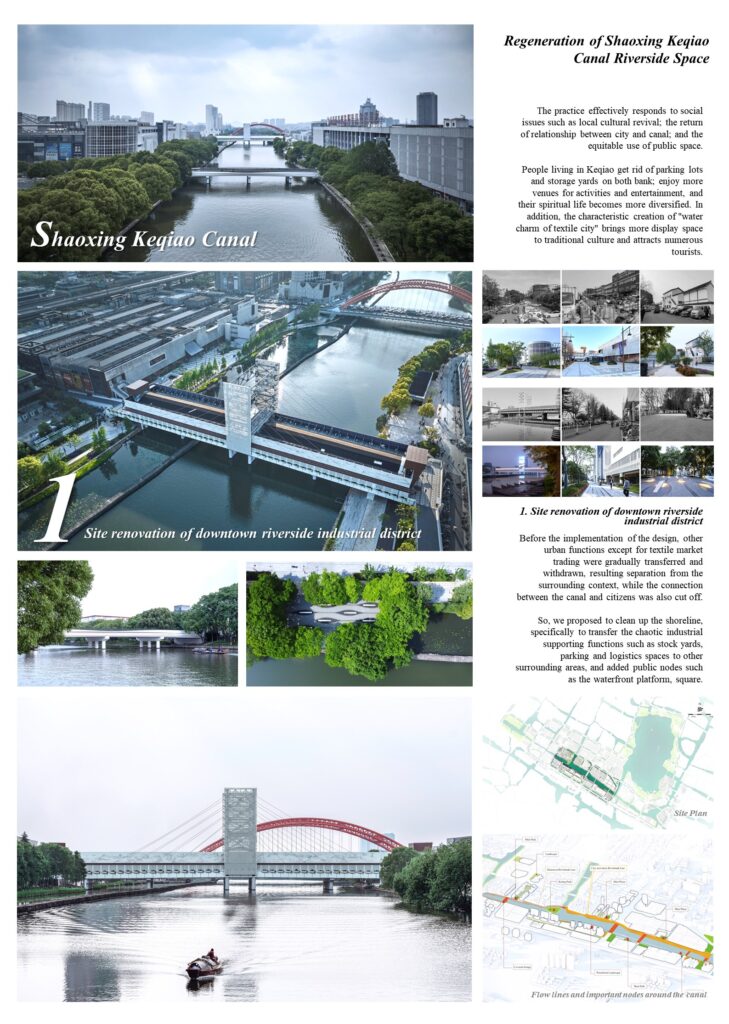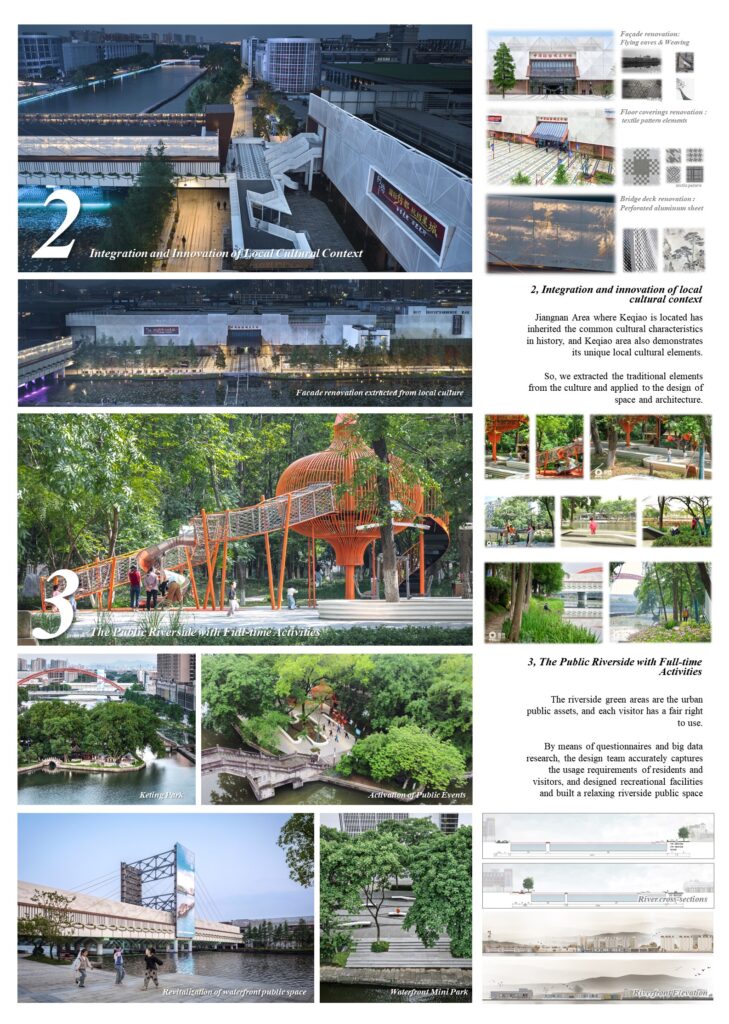(Background/Overview) East Zhejiang Canal is the “mother river” of Keqiao District in Shaoxing. From the initial “riverside cloth street” to the “light textile market”, and to the current modern “international textile capital”, the rapid development of light textile industry and the change of transportation mode have brought people better income in the past 40 years. However, with the rapid economic growth, the “mother river” is gradually being forgotten. Based on the exploration of East Zhejiang Canal culture and light textile industry culture, as well as the reuse of local elements and the new interpretation of local cultural context, the design renovates a waterfront area with single function, declining landscape and separated from the city into a public riverside space. “Bring the city back to the waterfront, and give the waterfront back to the people.”
Urban Design & Architecture Design Awards 2025: Entries Open!
Take your work to the next level. Register Now…
Gold 🏆 Winner
Urban Design & Architecture Design Awards 2024
Regeneration of East Zhejiang Canal Riverside, Shaoxing Keqiao
Public Landscape Architecture (Built)
Firm
Tongji Architectural Design (Group)Co., Ltd.
Architect/Designer
WU Zhiqiang
Design Team
Lu Feidong, Zhang Yujin, Jiang Limin, He Rui, Jiang Du, He Qiang, Yu Xinwei, Hu Kelin, Li Jin, Teng Yuwei, Yang Xinyu, Zhang Lei, Zhai Yibo,Liu Changrui
Location
Shaoxing, Zhejiang, China
Country
China
Photographer/Copyright
©ZY Studio
(State before renovation) Before the renovation, Keqiao ignored the importance of surrounding environment and waterfront space by taking industrial development as its orientation, resulting in congestion brought by vehicles and carts everywhere. The riverside fences make people’s life isolated from the bank. The elderly and children living here always saw parking lots, freight yards and the garbage stations.
(Renovation strategy I) In the renovation planning, designers first propose to clean up the shoreline, specifically to transfer the chaotic industrial supporting functions such as stock yards, parking and logistics spaces to other surrounding areas, and introduce digital technology to improve the efficiency of functional spaces. On this basis, the waterfront space is further opened, the unnecessary protective fences are removed on the premise of meeting the flood control standards and the protection requirements of the ancient canal. Public nodes such as the waterfront platform, square and wharf are added. Meanwhile, the connectivity between the two sides of the canal is strengthened, and the existing bridge is renovated with space optimization and facade beautification to realize the functions of trade industry, green plants and communication space.
(Renovation strategy II&III) The design team explore the history, and extract the elements of “cornice, textile, weaving, water, boat, flute”, which represent Keqiao culture, and then use integrated design and modern interpretation techniques to express these elements in the objects such as building surface, ground pavement, landscape installation, guiding road sign and night scene lighting to arouse collective memory and identity of local culture. By means of questionnaires and big data research, the design team accurately captures the usage requirements of local residents and visitors, and introduces intelligent security and smart city system to comprehensively improve the diversity, entertainment, and safety of public space.
(Conclusion)With the implementation and phased completion of the project, the total number of tourists has exceeded 2 million up to now. The riverside space has witnessed abundant civic activities. It is not only an aesthetic landscape transformation of the public space environment, but also an important practice of returning the city to the public, which features a long-term significance of refocusing on the people, and exploring and inheriting the local cultural context.





